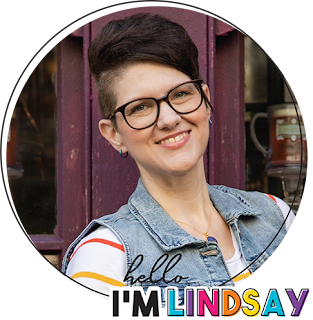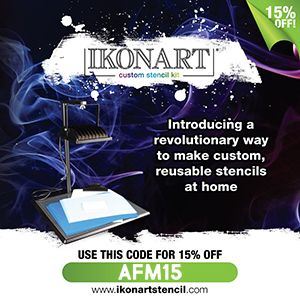Create a Stenciled "Hoppy Easter" Wooden Egg Sign using Ikonart to add to your Easter decor!

Easter is coming up quick, and I'm excited for all the bright spring colors to come back! I found this fun wood egg blank at Target, and immediately got to work creating a design for it using my Ikonart kit!! This "Hoppy Easter" Wooden Egg Sign was such a fun and simple project to make, and I absolutely love how it turned out. It's such a fun and festive piece of holiday decor, and I'm sharing the FREE design so that you can make one to display in your own home!!
New to making reusable stencils? Here's how to Get Started with Ikonart!

To make your own Stenciled "Hoppy Easter" Wooden Egg Sign, you will need these supplies:
- "Hoppy Easter" Stencil Design (for personal use only)
- Ikonart Custom Stencil Kit
- Unfinished Wood Egg Cutout
- Sandpaper
- Chalk Paint or Acrylic Paint
- Paint Brush
- Squeegee
- Detail Brush (optional)
*Save 15% on Ikonart supplies when you shop with code AFM15
Printables and cut files from Artsy-Fartsy Mama are for personal use only. You may use these files for personal projects, but you may not sell them. If you'd like to share this project digitally, share a link to this post/website only. Do not share a direct link to the file.
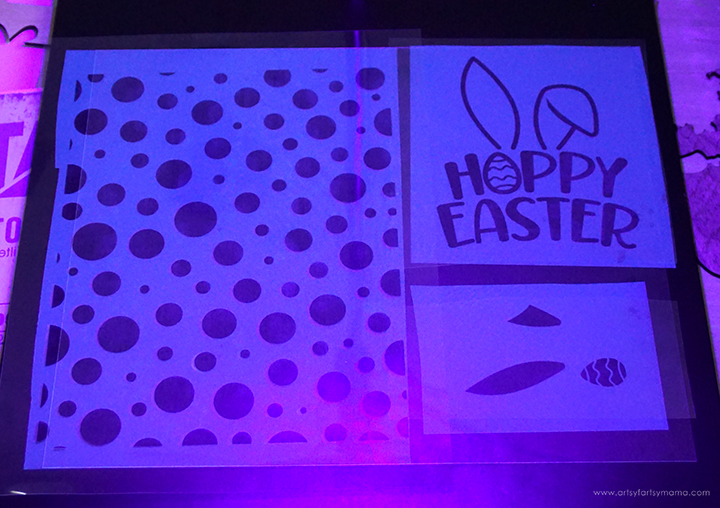
To make a stencil, you need to start with a printed design. Download the "Hoppy Easter" Stencil Design (for personal use only) and print the design as dark as possible on either inkjet or laser Ikonart Printer Film.
The next step in the process is exposing the stencil film. Set up the exposure stand with UV LED Light by following the directions included in the kit. Ikonart Stencil Film is light sensitive, so be careful to keep it out of sunlight and bright lights before exposure. Cut a piece of the film slightly larger than the design print.
Lay the piece of film down on the base of the stand with the textured side facing up, and then place the printed design on top of the stencil film.
Lastly, place the clear exposure sheet (found in the stencil film pack) on top and press it down well to seal the design tight against the stencil film. Any air pockets between the two will mess up your stencil exposure. Turn the exposure light on and expose the film for 35 seconds.

The final step in the stencil-making process is to washout, or rinse, the stencil. Clip the exposed stencil film to the Ikonart clipboard with the shiny side (carrier sheet) touching the clipboard. Use the kitchen sink or shower sprayer to rinse the stencil film with warm water until the design shows through and becomes completely clear. The washout process shouldn't take more than 3-5 minutes.
Gently blot the excess water from the stencil, and hang or lay the stencil flat to dry for about 45 minutes. When the stencil is dry, you shouldn't see any water spots or discoloration. Once the stencil is completely dried, place the it back on the exposure stand and expose it again for at least 2 minutes without the clear cover sheet. This extra exposure time will increase the durability of the stencil so you can get as much use out of it as possible. On the clear backing of your stencil, write the word "BACK" with a permanent marker.

Use sandpaper to make the surface of the wooden egg as smooth as possible. Next, paint the egg with a coat of acrylic paint. When it comes to crafting, my original ideas don't always turn out the way I planned. I originally wanted the egg to be this gorgeous teal color, so I painted a couple of coats and let it dry. But then I started thinking about how other colors would look layered on top and realized they might clash. To test my theory before repainting, I added some swashes on the bottom of the egg and it turned out I liked the purple instead and repainted the egg.
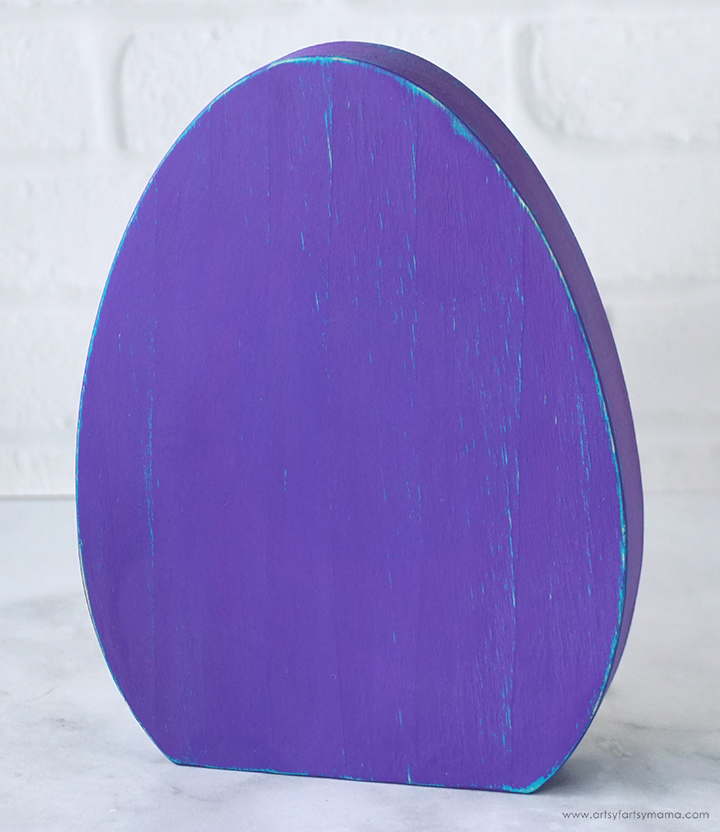
No matter what color you paint the egg base, just make sure to let the paint dry completely before moving on to the next step.

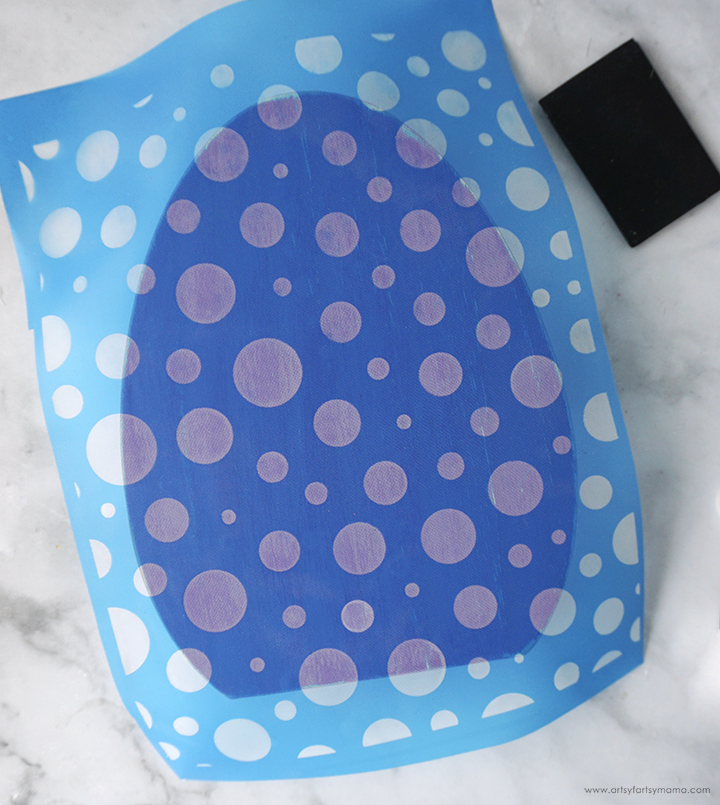
Peel the carrier sheet away from the polka dot pattern stencil and set it aside (don't throw it away). Place the stencil down on the egg, and rub with medium pressure to help it stick to the surface and to get rid of any air bubbles trapped underneath.

Because acrylic paint is a thinner consistency, there can be trouble with bleeding on stencil projects. Chalk paint is thicker than regular acrylic paint, so this helps to create crisp lines when stenciling. To thicken your acrylic paints (any brand or type), I recommend mixing in a little bit of chalk paint powder.
Just add a little bit of powder to the paint and stir it together with a craft stick. Add a little more powder at a time until you get the consistency you want.
*If you're not sure what to kind of paint to use on your projects, Ikonart has a list of paint and ink selections to help you out!

*A great part about this particular polka dot stencil is that you can use it again and again for SO many more projects besides this one!!

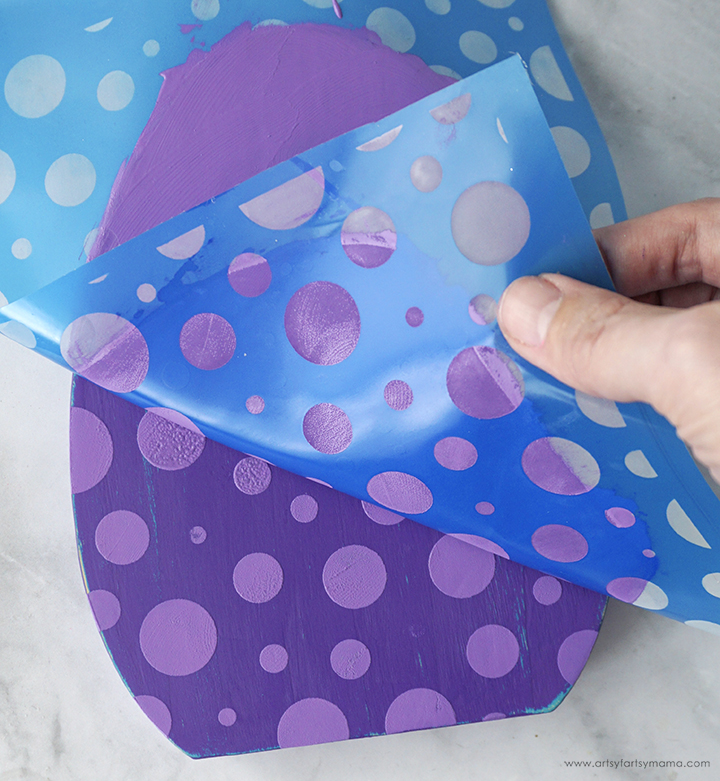

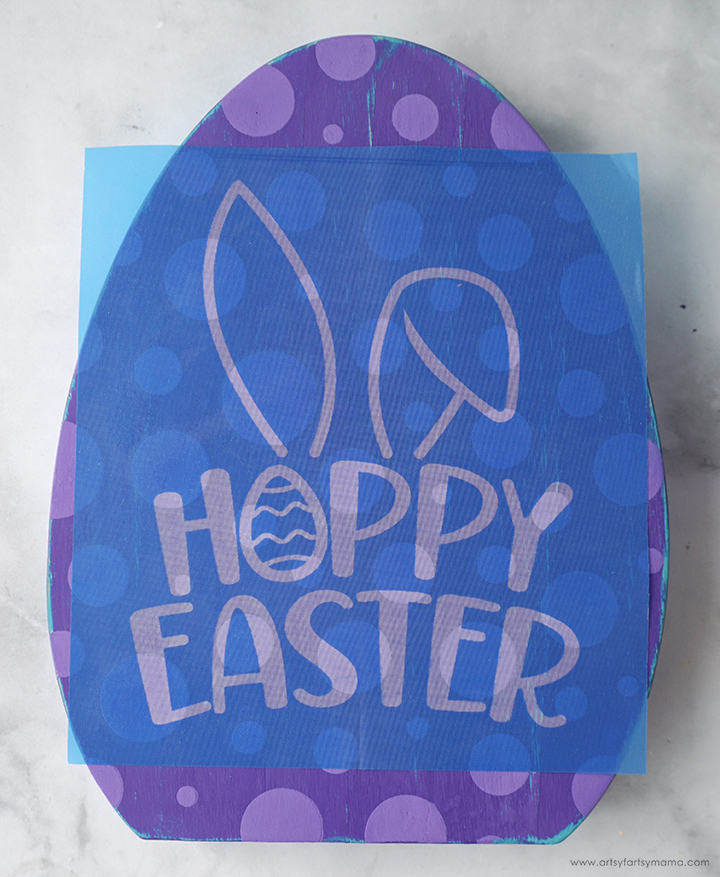

Slowly peel the stencil up to reveal the design, and lay it back down cover any missed areas. Once you get to the opposite end, remove the stencil completely and wash it using the instructions above.

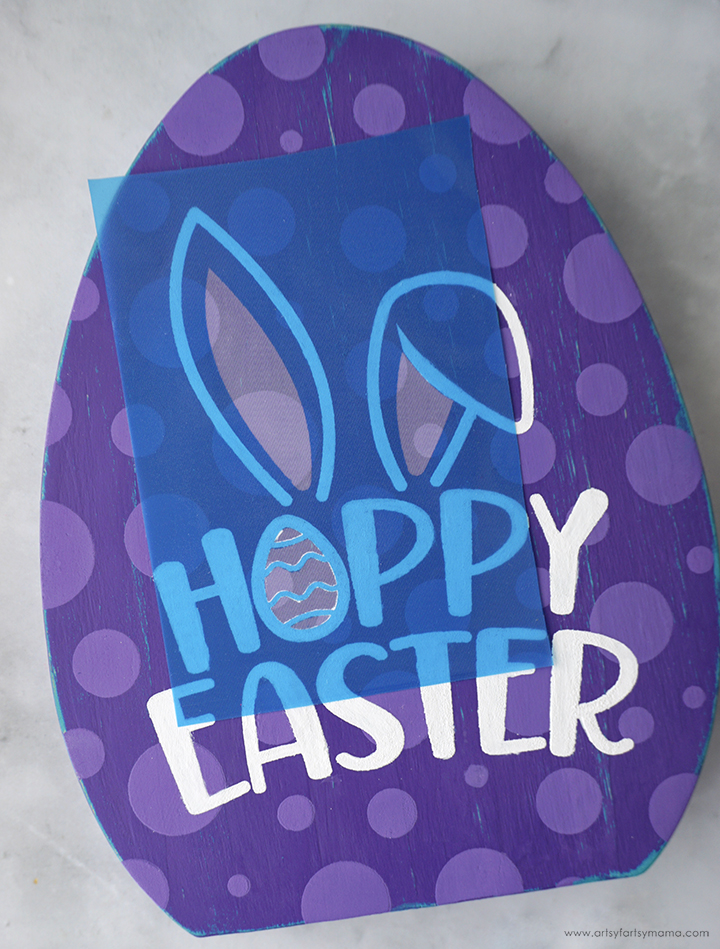
Lastly, place the third stencil down over the design to add the inner part of the bunny ears and to fill in the Easter egg in the word "hoppy". Press the stencil down well.


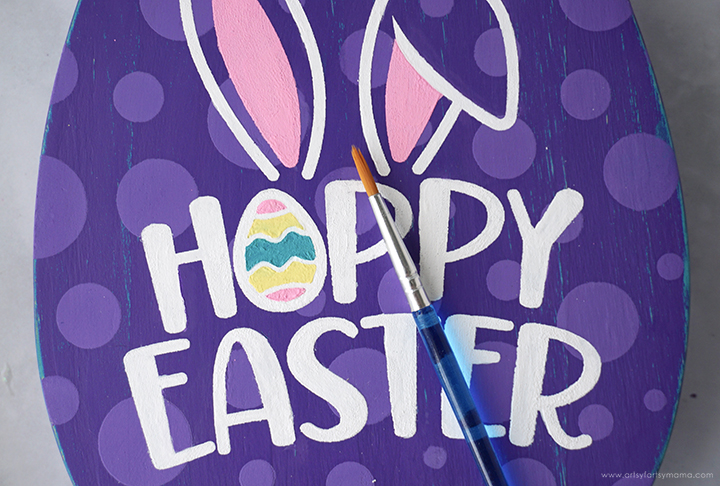

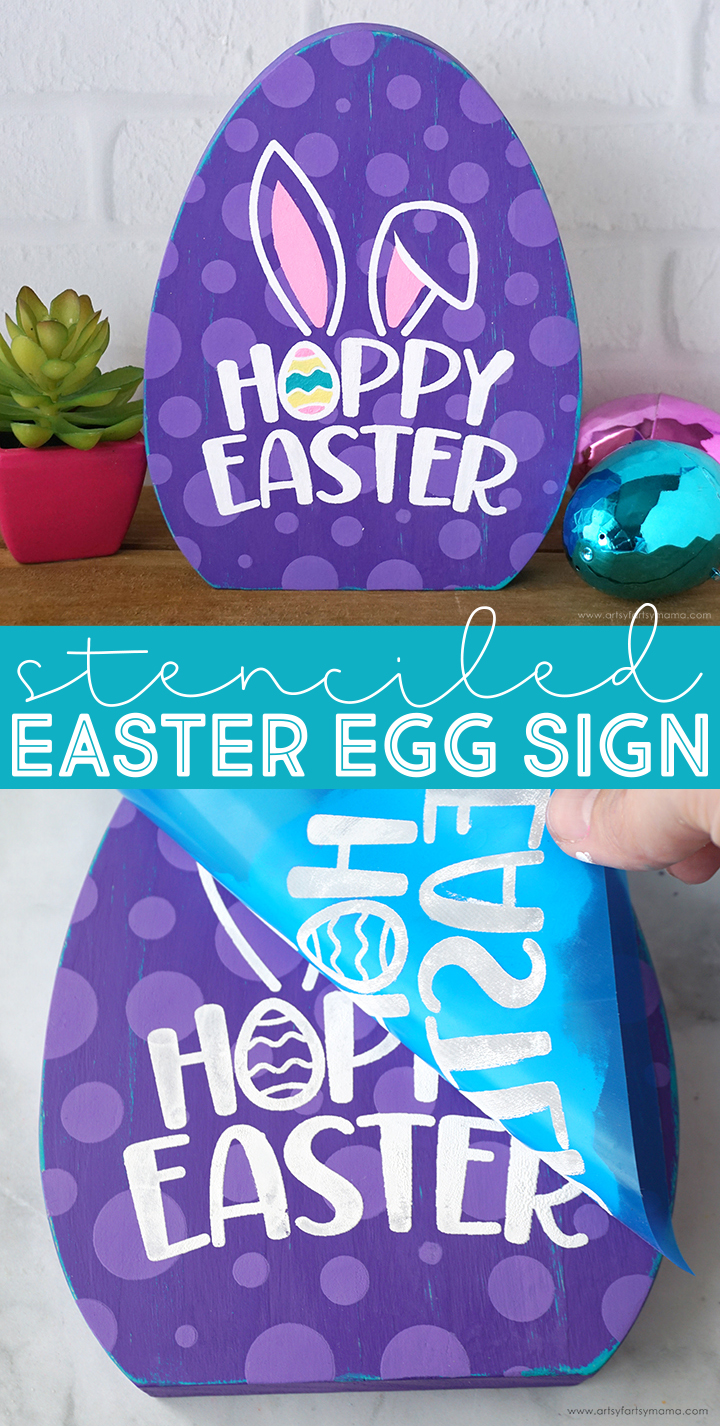

I mixed some of the same purple paint that I used on the wood and mixed in a little bit of white paint to lighten it. Add some paint to the top of the egg and gently pull the squeegee down over the stencil until the open areas are all evenly covered. Scrape away the excess and put it back onto the paint tray or bottle.

Chalk paint is thicker, but it also dries quicker than regular acrylic paint, so you need to move a little quicker than you usually would with painted projects. Start at one corner and lift up the stencil to reveal the paint underneath. If you see any areas that you may have missed, carefully lay the stencil back down and add a little more paint.

Once you get to the opposite end and see that all areas have been covered, peel the stencil away from the wood. If you notice any missed spots or bleeds after removing the stencil, grab a small detail paint brush and add a light coat of paint over the area(s).
Let the paint dry completely, and wash the stencil well following the instructions below.
Washing Stencils:
For best results, wash stencils while the paint is still wet. To wash your stencil so that it can be used again and again, first get the clipboard wet so your stencil doesn't stick to it. Place the stencil on the clipboard with the textured side up, and lightly rub the stencil under cold running water to remove all the paint.
Do not rub or scrub the adhesive side of the stencil, and NEVER use anything other than water to wash the stencils. To prevent the stencil from breaking down, don't ever leave the stencils to soak.
Remove the stencil from the clipboard and lay it down with the adhesive side up. While the stencil is still wet, place the carrier sheet onto the stencil so that the word “BACK” is readable. Hang or lay the stencil flat to dry completely.

Once the paint is completely dry, center the "Hoppy Easter" stencil and press it down well. If the paint is even a little bit wet, you will risk pulling it up or even having your stencil stick permanently when you peel the stencil away.
Paint over this stencil with thickened white acrylic paint the same way as before, using a squeegee, sponge, or even your fingertip.


Allow the paint to dry completely. Again, if you notice any missed spots or bleeds after removing the stencil, grab a small detail paint brush and add a light coat of paint over the area(s).


Thicken up a little bit of pink acrylic paint and any other colors you want to add to the Easter egg design. Since these areas are small, I just used my fingertips to lightly press the paint into the open areas of the stencil.

Carefully peel up the stencil, just like before to reveal the design underneath. If necessary, lay it back down to cover any missed areas. As I peeled up my stencil, I noticed that my green and yellow paints were a little too thin and bled through the stencil a bit.
Remove the stencil and wash it as instructed.

Immediately after removing the stencil, I used my small detail paint brush to fix my paint bleeds. The paint was still wet, so it made it a lot easier to work with. Allow the paint to dry completely and cover with a coat of sealant to keep it looking good as new year after year.

It was a lot of fun using one stencil design to make an Easter sign in different colors of paint. I absolutely LOVE how this "Hoppy Easter" Wooden Egg Sign turned out!! This sign is such a festive piece of holiday decor, and I kind of want to make a bunch of them now for friends and family - which is easy to do with these Ikonart reusable stencils.
I'd love to hear what you think about this project, or if you want to know more about reusable stencils. If you've made your own stenciled projects, I would love to see your creations! Share them on Instagram, Facebook, or leave a comment/photo on the project pin on Pinterest! #AFMCrafts
Don't forget to Pin, Like, and Share!


